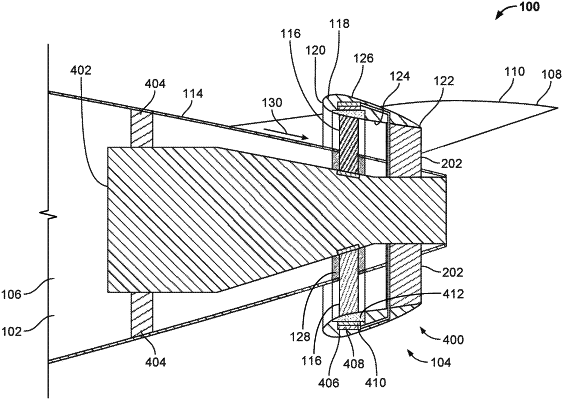| CPC B64C 11/001 (2013.01) [B64C 21/08 (2013.01); B64D 27/24 (2013.01); B64C 2230/04 (2013.01); B64C 2230/06 (2013.01); B64D 2041/002 (2013.01)] | 20 Claims |

|
1. An aircraft, comprising:
a fuselage having an outer skin;
an auxiliary power unit (APU) located within the fuselage; and
a fan including:
a plurality of fan blades arranged circumferentially about the APU and projecting along a direction that extends radially outward from the outer skin;
a fan drive operatively coupled to the APU, the fan drive configured to rotate the fan blades to by receiving a supply of electrical energy from the APU, the rotation of the fan blades to accelerate a fuselage boundary layer traveling rearward along the outer skin from a first velocity to a second velocity greater than the first velocity, and
a duct circumscribing the fan blades, the duct having an inner surface and an outer surface located radially outward of the inner surface, wherein the fan drive is an electric ring motor having a stator and a rotor, the rotor being rotatable relative to the stator, the fan blades being operatively coupled to and extending radially inward from the rotor, the rotor being located within the duct between the inner surface and the outer surface.
|